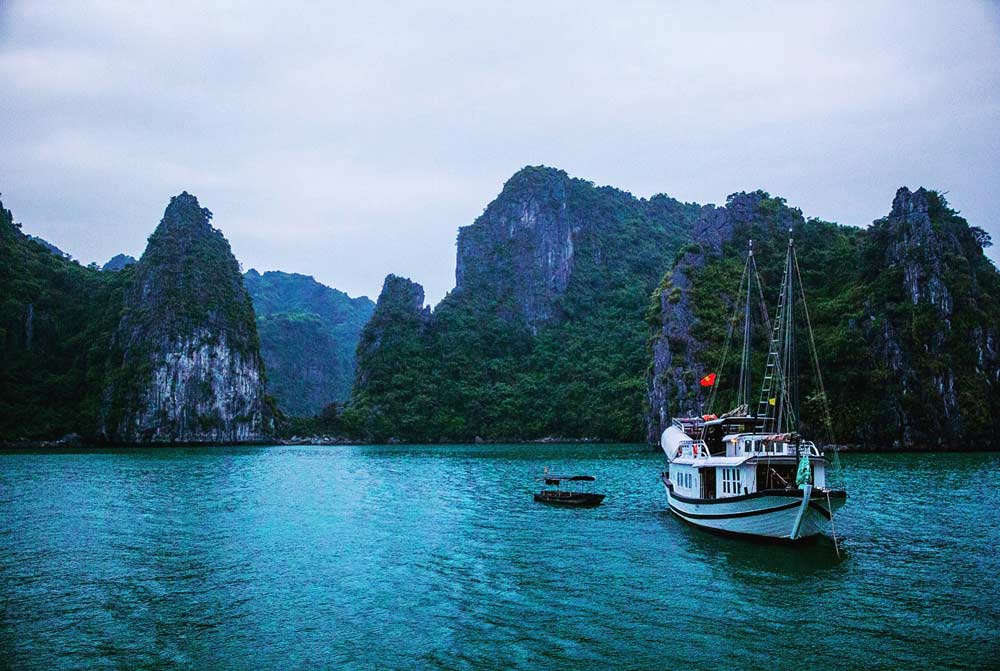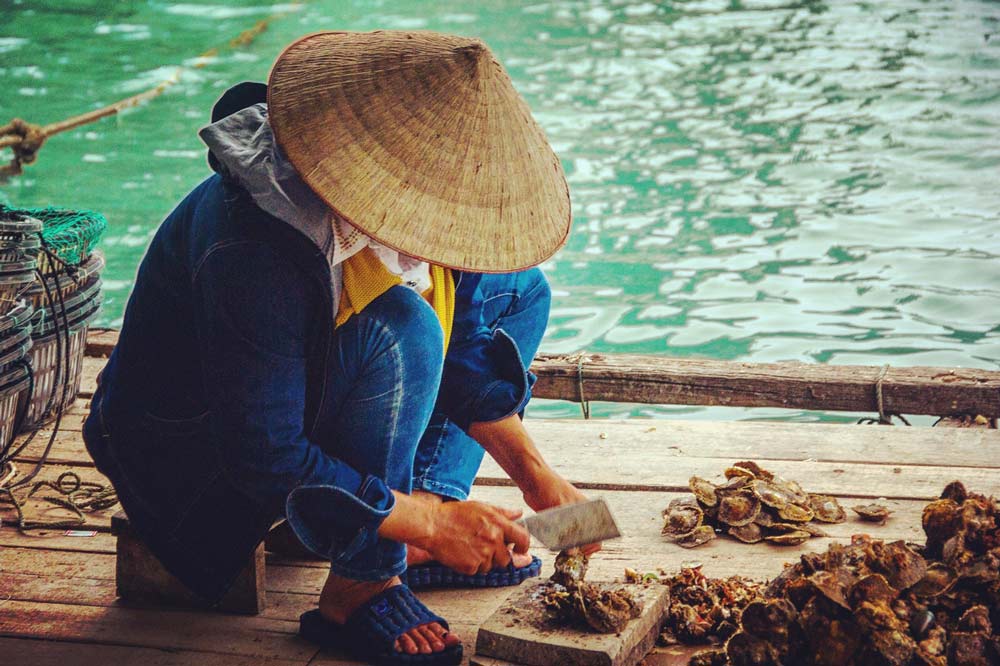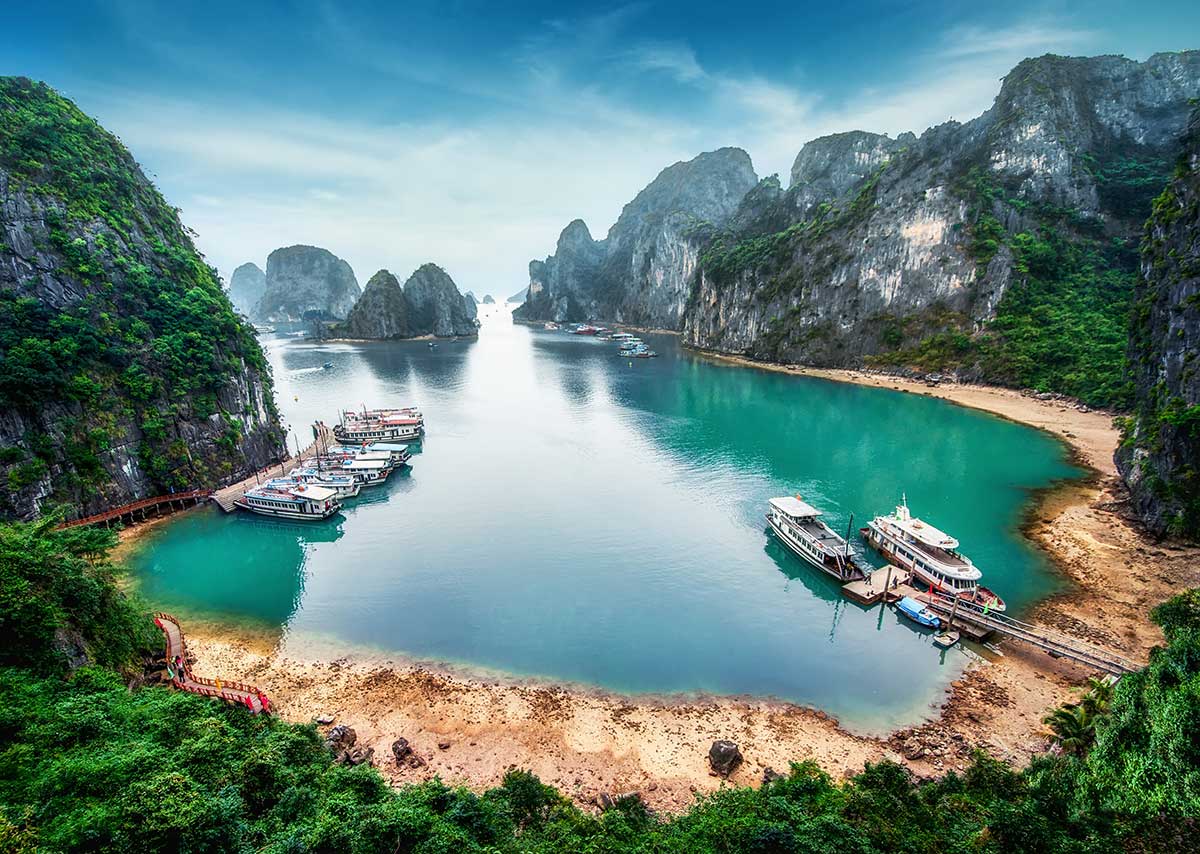The landscape of Ha Long Bay, located just a few hours east of Hanoi, is among the most unique in the world. According to legend, several thousand years ago the burgeoning nation of Vietnam summoned the Mother Dragon to help them fight off an influx of invaders, which they did using divine fire and giant emeralds. The remnants of this mythical battle can now be seen in the form of immense limestone pillars and tiny islets surrounded by emerald blue waters. This stunning series of earth and water formations combined with a multitude of classic junk boats, give the place a mystic, timeless feel. This UNESCO World Heritage site should be high on your adventure list--here are a few tips to make the most of your visit!
Sail on a junk boat. These ancient sailing vessels are unbelievable in both their beauty and their service. From the deck, (perhaps after a bit of tai chi or a steaming Vietnamese coffee) experience the intricacy of Ha Long Bay in motion-- you'll quickly begin to respect your captain's ability to navigate the thousands of tiny inlets within the bay. Afterward, enjoy a lavish meal in the dining lounge before taking to the deck with your camera or a good book. Get in the water. Whether it's in a kayak or in a swimsuit, experiencing the lovely blue waters of Ha Long Bay is a truly unforgettable experience. The water in the bay maintains an average temperature of 70 degrees Fahrenheit, making it an enticing option even in the early morning. Leap off the deck of your junk boat or simply wade in from one of the islands; just be sure to pack your sunscreen!
Hike on one of the islands. In addition to taking a soak in the bay's wonderful waters, one of the best parts about visiting Ha Long Bay is exploring one of the thousands of forested islands. While Cat Ba is the largest and most popular of these islands, there are numerous others which offer amazing views of the surrounding landscape from their summits. Visit a pearl farm. Regardless of whether or not you're looking for a new piece of jewelry, visiting a floating village where pearls are grown and harvested is a must. Even just getting to one of these pearl farms is often an experience in itself, as it usually requires a small boat ride, paddled by a local, sometimes with their feet! Once you're back on terra firma, witnessing the intricate and lengthy process that goes into creating just one perfect pearl gives you a new appreciation for their worth.
Enjoy the food. While it's great to be active while visiting Ha Long Bay, it's also important to take a moment to soak in the local food culture. If seafood is your game, you're sure to enjoy the plethora of options available, from scallop soups to fresh crab to grilled shrimp, all served with the perfect amount of spice. Just don't forget to save room for some dessert, often in the form of sweet fruits! Whether you're traveling on your own or joining our Backroads Vietnam & Cambodia Walking & Hiking Tour, you surely won't be disappointed when arrive to this incredible corner of Vietnam and enjoy all the adventure that awaits.
Want to see a detailed itinerary of the trip?















